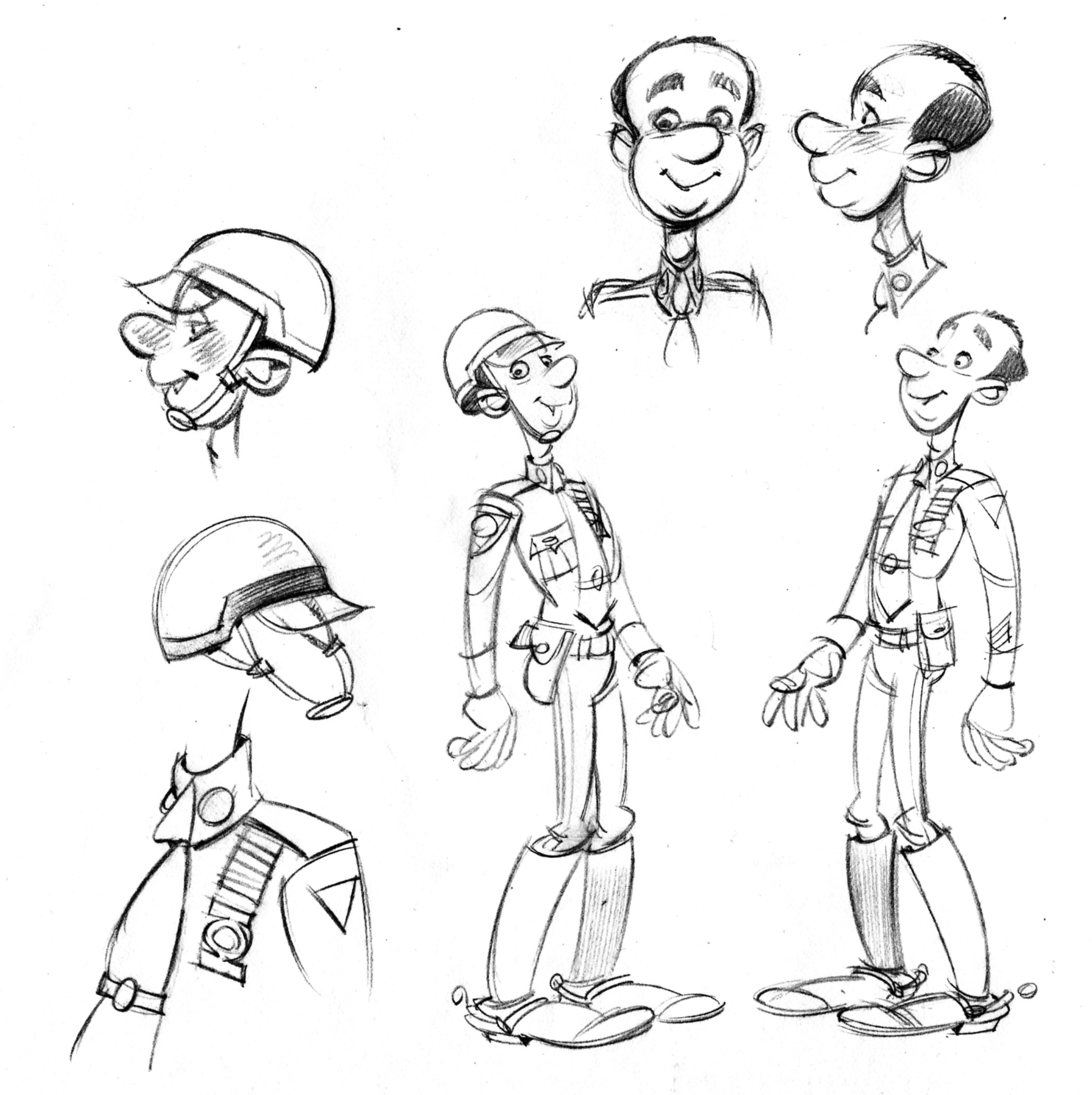Here’s Charlie
Twenty-fourteen is a big year here in Oil City, Pennsylvania. It was 100 years ago, just a couple of doors up from my studio address, that Charlie Chaplin signed his first movie deal with Mack Sennett. Charlie was performing at the Lyric Theater with Fred Karno’s comedy troupe and met Sennett in between acts to sign the contract. Here’s a detailed account of Charlie’s early career.
I was approached by the Friends of the Library to create a stand-alone cut-out of Charlie. They wanted him big—8 feet tall. I went over to the library to see where Charlie would be installed and discovered that there is not very much floor space but there is ample height—the main floor’s ceiling is about 16 feet high. I scrapped the drawing I’d done of Charlie standing and drew Charlie suspended, using his cane as a hook. I think this pose fits his acrobatic style.
I enlarged my drawing onto pieces of foam board. The project is 3 ply, so that I could paint front & back without it warping. His arm has a center of plywood and his cane itself is 3 pieces of plywood laminated together, since it supports the whole piece.
He is painted with acrylic in black & white, of course!









